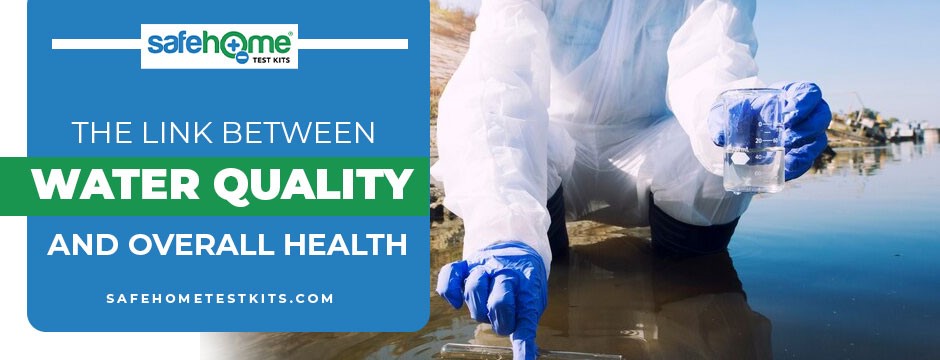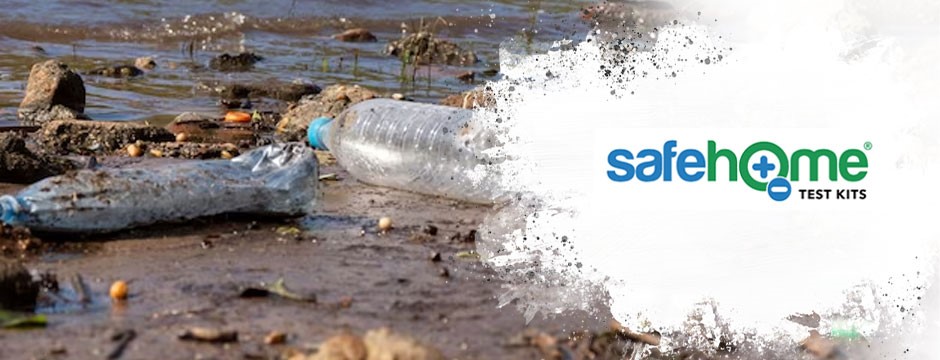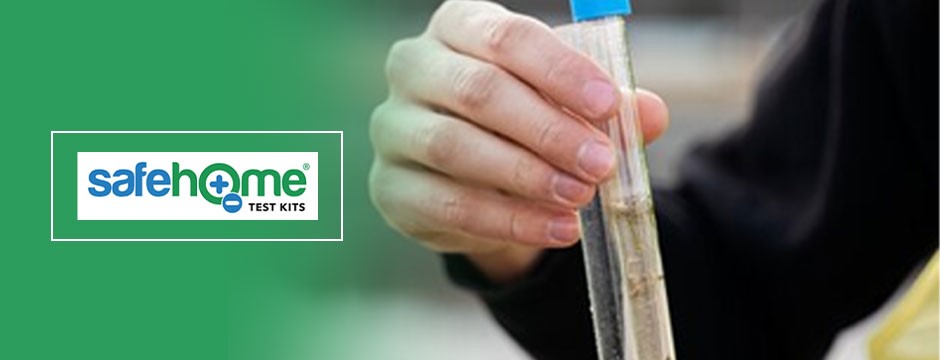The Link Between Water Quality and Overall Health

Water, often described as the elixir of life, is fundamental to our existence. Its significance goes beyond mere sustenance; it extends into the intricate web of our overall health and well-being. We are fortunate to have clean water in many parts of the world, but we must recognize the profound influence water quality wields on our health. In this guide, we embark on a comprehensive journey to unravel the inextricable link between water quality and our holistic health, illuminating the crucial need to comprehend, assess, and ensure the availability of clean and safe drinking water.
The Inseparable Triad of Water, Health, and Quality
Water is not just a life-sustaining substance; it is the very essence of life. It constitutes a fundamental component of our existence, playing a pivotal role in our bodily functions. Every sip of water we take contributes to our digestion, supports our circulation, and assists in regulating our body temperature. It’s no exaggeration to say that water is our physiological symphony’s silent yet powerful orchestrator.
The significance of water in maintaining our health is emphasized by the World Health Organization (WHO), which has declared access to safe drinking water as a fundamental human right. This proclamation underscores the vital role that clean water plays in preserving and enhancing our well-being. But what does it mean for water to be “safe” in this context? How do we assess and ensure its quality?
Navigating the Fundamentals of Water Quality
One of the key parameters we explore is pH, which measures the acidity or alkalinity of water. An imbalance in pH levels can have a direct impact on our health. We delve into turbidity, a measure of water’s clarity and the presence of suspended particles. Microbial contamination is another critical aspect, as it can lead to waterborne diseases that significantly threaten public health. The chemical composition of water, including the presence of contaminants such as heavy metals, further deepens our understanding of water quality.
Understanding these parameters is not just a matter of scientific curiosity; it is a fundamental step in assessing the safety of the water we consume. By scrutinizing these factors, we can gauge whether the water we rely on for our daily needs meets the essential criteria for safe drinking water.

Sources of Water Contamination
Water, our life’s essential sustainer, can be vulnerable to contamination at various points along its journey from source to tap. Understanding the sources of water contamination is the first crucial step in protecting public health and ensuring the availability of safe drinking water. One significant source of contamination is natural pollutants. These can include microorganisms like bacteria and viruses that thrive in water sources like rivers and lakes. Additionally, minerals and chemicals leaching from geological formations can affect water quality. Awareness of these naturally occurring contaminants helps us devise strategies to minimize their impact.
Industrial waste poses another significant threat. Chemical discharge from factories can find its way into water bodies, introducing toxic substances and heavy metals. This pollutes the water and can have dire consequences for human health if ingested or absorbed through the skin. Industries must implement responsible waste management to mitigate these risks.
Agricultural runoff, often laden with pesticides, herbicides, and fertilizers, substantially contributes to water contamination. Rainfall can wash these chemicals into nearby water sources, endangering aquatic ecosystems and our drinking water quality. Effective agricultural practices and responsible chemical usage are necessary to reduce this contamination.
Aging water infrastructure is yet another potential source of contamination. Crumbling pipes and outdated treatment facilities may introduce harmful contaminants or pathogens into the water supply. Regular maintenance and modernization of infrastructure are essential to mitigate these risks.
The Impact on Human Health
Contaminated water can lead to the outbreak of waterborne diseases, such as cholera, dysentery, and giardiasis. Microorganisms like bacteria and viruses find their way into water sources, infecting unsuspecting individuals who consume or come into contact with the water. These diseases often cause severe gastrointestinal distress, sometimes leading to hospitalization or even death.
Gastrointestinal issues are a common result of consuming contaminated water. Nausea, vomiting, diarrhea, and abdominal pain are unpleasant symptoms individuals may experience from ingesting contaminated water. Such issues not only affect daily life but can lead to severe dehydration, which is especially dangerous for vulnerable populations.
Long-term health problems are a grave concern associated with inadequate water quality. Chronic exposure to contaminants like heavy metals, nitrates, or industrial chemicals can lead to serious health conditions. For instance, lead poisoning from old plumbing systems can result in neurological damage, especially in children.
Vulnerable Populations
Children with developing immune systems are more vulnerable to the consequences of waterborne diseases. Diarrheal diseases, for example, can be life-threatening for young children in impoverished regions with limited access to medical care. As previously mentioned, lead exposure can have lasting cognitive and developmental impacts on children.
The elderly, with weakened immune systems, are also at higher risk. Waterborne diseases can hit them harder, potentially leading to severe health complications or even fatality. Elderly individuals may have diminished physical resilience to combat infections.
People with compromised immune systems, such as those living with HIV/AIDS or undergoing chemotherapy, face a heightened risk of severe illness from waterborne pathogens. Their immune systems are already compromised, making it even more challenging to fend off infections.
Recognizing the vulnerability of these populations is essential for shaping public health policy and strategies. It underscores the need for stringent water quality regulations and robust monitoring systems. We must prioritize protecting those most at risk, ensuring they have access to clean and safe drinking water and the necessary support to maintain their health.
Water Quality Standards and Regulation
Water quality standards are specific criteria defining the acceptable levels of contaminants and impurities in drinking water. These criteria protect public health by ensuring that water is safe for consumption. For instance, the Environmental Protection Agency (EPA) in the United States sets stringent standards for various contaminants in drinking water. These standards cover various parameters, from microbial contaminants like bacteria and viruses to chemical contaminants like lead and arsenic. The EPA enforces these standards and holds water suppliers accountable for delivering safe water to the public.
On a global scale, the World Health Organization (WHO) sets guidelines that influence water quality standards in many countries. These guidelines are instrumental in promoting uniform standards and ensuring that drinking water meets specific health and safety criteria. WHO guidelines serve as a valuable reference for countries developing their water quality regulations, contributing to the global effort to provide access to safe drinking water.
Water Quality Testing and Monitoring
Water quality testing serves as a critical link between established standards and the actual quality of the water supplied. Regular monitoring allows water authorities to detect deviations from standards and take corrective measures promptly.
Home testing kits provide an accessible way for individuals to monitor their own water quality. These kits are user-friendly and can detect common contaminants like lead, chlorine, or pH levels. While they may not be as comprehensive as professional testing, they empower individuals to take charge of their water quality.
At the other end of the spectrum, advanced laboratory analyses thoroughly evaluate water quality. These tests can identify contaminants, including heavy metals, pathogens, and chemical compounds. Laboratories equipped with state-of-the-art instruments can provide highly accurate results and are indispensable for regulatory compliance and research.
Continuous monitoring relies on automated systems, particularly in larger water treatment facilities. These systems continuously analyze water samples, alerting operators to deviations from established parameters. This real-time monitoring is vital in ensuring that water quality remains consistently high.
The Role of Filtration and Treatment
Chlorination is a widely used method that involves adding chlorine to water to disinfect it and eliminate harmful microorganisms. Filtration processes, on the other hand, physically remove impurities by passing water through various filters. These methods are effective at removing many contaminants, but they may only address some water quality issues.
For more comprehensive purification, advanced processes like reverse osmosis are employed. Reverse osmosis systems use semipermeable membranes to remove contaminants, including salts, minerals, and microorganisms. This process is particularly effective in areas with high levels of dissolved solids in the water.
UV disinfection is another modern technique that utilizes ultraviolet light to kill or inactivate microorganisms. It is a chemical-free and environmentally friendly method that has gained popularity for its effectiveness in disinfecting water without altering its taste or smell.
Ensuring Access to Clean Water
Access to clean water is not a universal reality. In many regions around the world, communities still need more reliable access to safe drinking water. This issue not only impacts human health but also perpetuates a cycle of poverty and inequality. Governments and organizations have initiated various programs and projects to expand access to clean water sources.
Sustainable Development Goal 6, part of the United Nations’ 2030 Agenda for Sustainable Development, focuses on clean water and sanitation as a critical global goal. Its objectives include:
- Ensuring universal access to safe and affordable drinking water for all.
- Improving water quality by reducing pollution.
- Substantially increasing recycling and safe reuse of water.
Governments play a significant role in achieving SDG 6 by investing in water infrastructure, regulating water quality, and ensuring equitable distribution of clean water resources. NGOs and international organizations provide vital support by implementing water supply projects, raising awareness, and advocating for global action.
Additionally, technological innovations and water management are pivotal in improving access to clean water. These range from low-cost water purification systems to advanced desalination plants, making it possible to provide clean water in even the most challenging environments.
While significant progress has been made in expanding access to clean water, much work remains. The efforts outlined in this chapter underscore the importance of a coordinated global response to this pressing issue, where clean water is recognized as a basic human right.
Community and Individual Action
Community efforts can include participating in local clean-up initiatives, organizing educational programs on water conservation, and advocating for improved water infrastructure and regulation. These actions help protect local water sources and foster a sense of responsibility and unity within communities.
On an individual level, there are various steps that can be taken to reduce water pollution and conserve water resources. These include minimizing the use of harmful chemicals that can enter water sources, properly disposing of hazardous waste, and using water-saving appliances and fixtures. Simple lifestyle changes like reducing plastic waste can also contribute to cleaner water.
Additionally, supporting organizations and initiatives focused on water quality and sanitation can make a significant difference. Donations to NGOs or volunteering for clean water projects can significantly improve water access for communities in need.

Conclusion – Water Quality as a Pillar of Health
Water quality affects every aspect of our lives, from our daily hydration to the food we prepare, the baths we take, and our communities. It is intricately woven into our health, supporting our physiological functions and safeguarding us from waterborne diseases and long-term health problems.
The journey through this guide has unveiled the complexities of water quality, from its sources and standards to testing, treatment, and access. It has underscored the significance of collective action, from governments and organizations to individuals and communities, in addressing water quality challenges.


